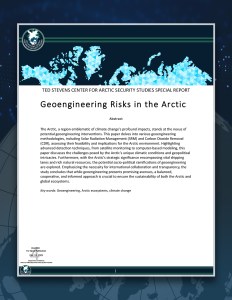The Arctic, a region emblematic of profound change, stands at the nexus of potential geoengineering interventions. This paper delves into various geoengineering methodologies, including Solar Radiation Management (SRM) and Carbon Dioxide Removal (CDR), assessing their feasibility and implications for the Arctic. Highlighting advanced detection techniques, from satellite monitoring to computer-based modeling, this paper discusses the challenges posed by the Arctic’s unique operational environment conditions and geopolitical intricacies. Furthermore, with the Arctic’s strategic significance encompassing vital shipping lanes and rich natural resources, the potential socio-political ramifications of geoengineering are explored. Emphasizing the necessity for international collaboration and transparency, the study concludes that while geoengineering presents promising avenues, a balanced, cooperative, and informed approach is crucial to ensure the sustainability of both the Arctic and global ecosystems.

